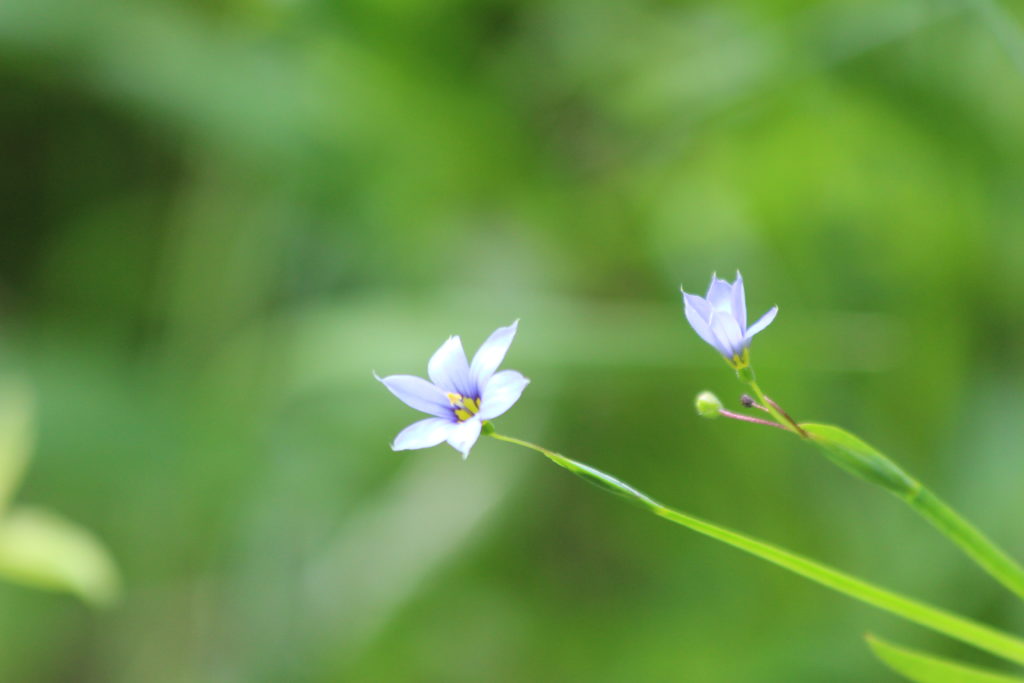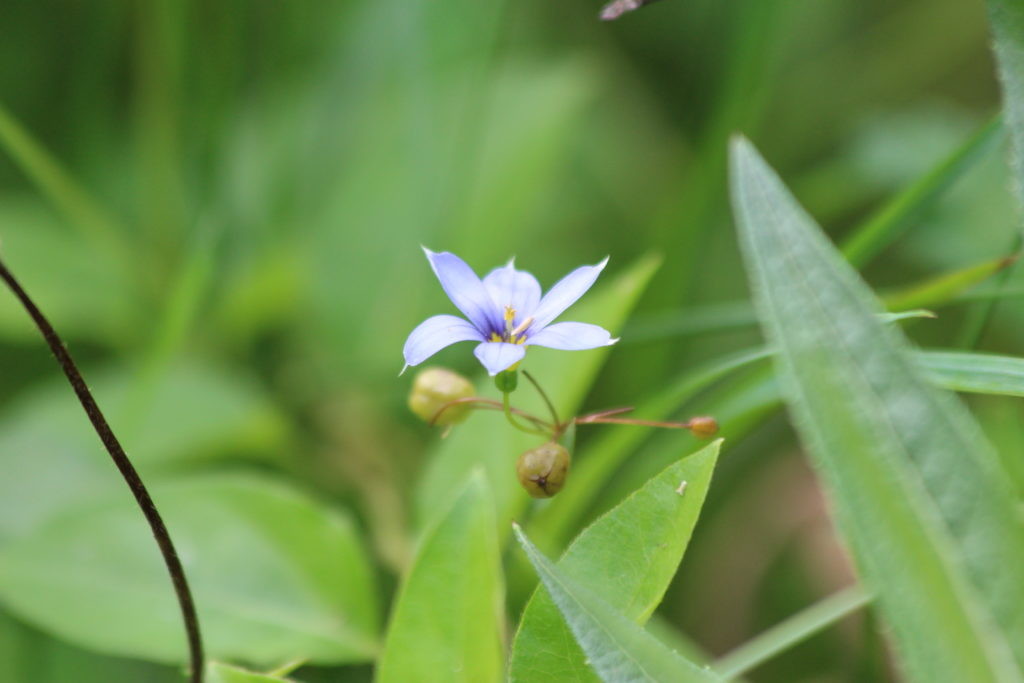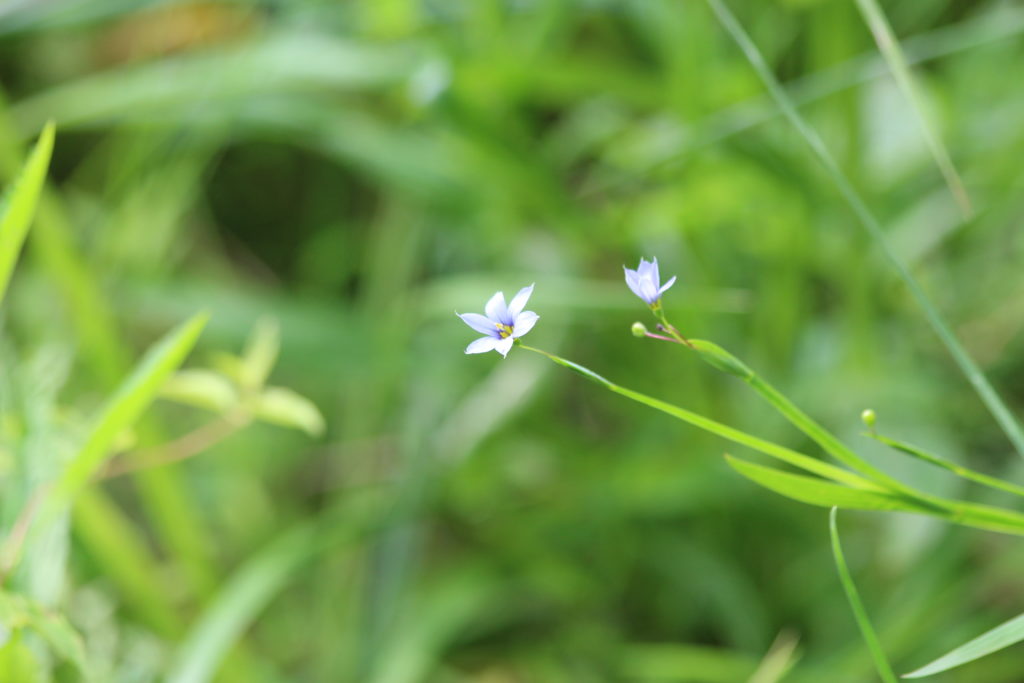
What’s in Bloom | Blue-eyed-grass
June 9, 2020
Blue-eyed-grass (Sisyrinchium spp.)
This Virginia native perennial is not actually a grass, but a member of the Iris family. It is found in the southeastern United States and north through Ontario. The leaves of the Blue-eyed-grass are straight and thin, resembling a patch of grass. It typically grows in meadows and wooded areas with moist, well-draining soil and thrives in full sun to part shade.
The light blue to violet flowers bloom in May through June. The flowers have a yellow center and each of the six petals has a small bristle on the tip. Around July, the flowers turn into small round fruits.
According to The Flora of Virginia, There are several different species of blue-eyed-grass native to Virginia. They are the following:
- Coastal plain blue-eyed-grass (S. fuscatum) – infrequent
- Eastern blue-eyed-grass (S. atlanticum) – more common
- Narrow-leaved blue-eyed-grass (S. angustifolium) – more common
- Needle-tip blue-eyed-grass (S. mucronatum) – more common
- White blue-eyed-grass (S. albidum) – rare
- Wiry blue-eyed-grass (S. capillare) – rare
Note: Annual blue-eyed-grass (S. rosulatum), an introduced species, is also documented in a few counties in VA.
Benefits to Biodiversity | The flowers of Blue-eyed-grass support pollinators in late Spring. It is a perfect plant for home gardeners to add to their native flower beds to support wildlife and enjoy beautiful blooms!
Sources: Flora of Virginia, Virginia Native Plant Society & USDA

